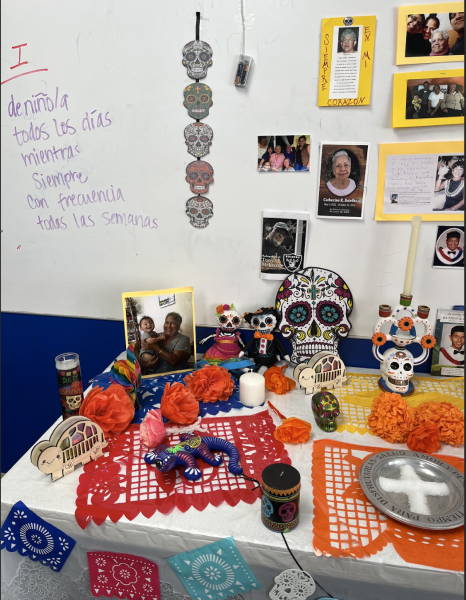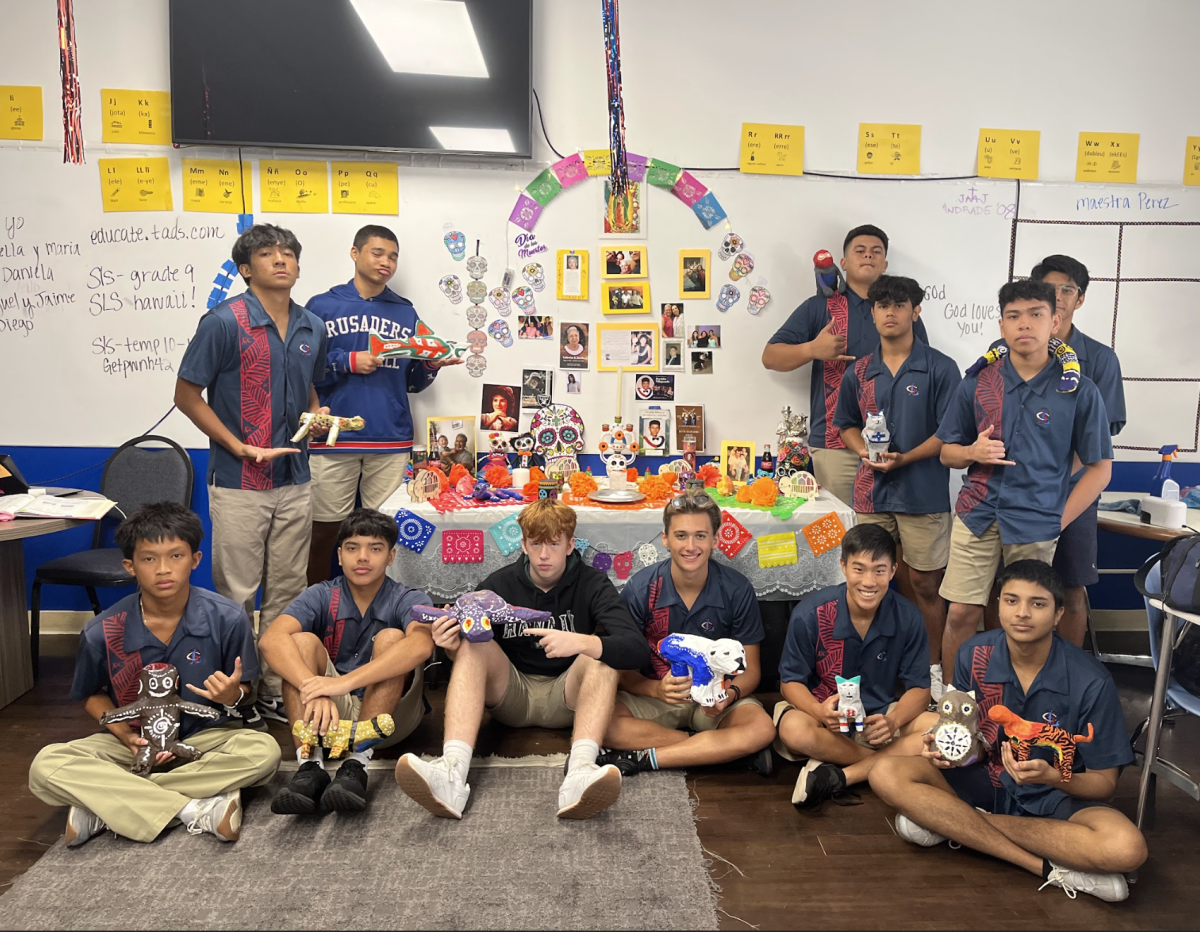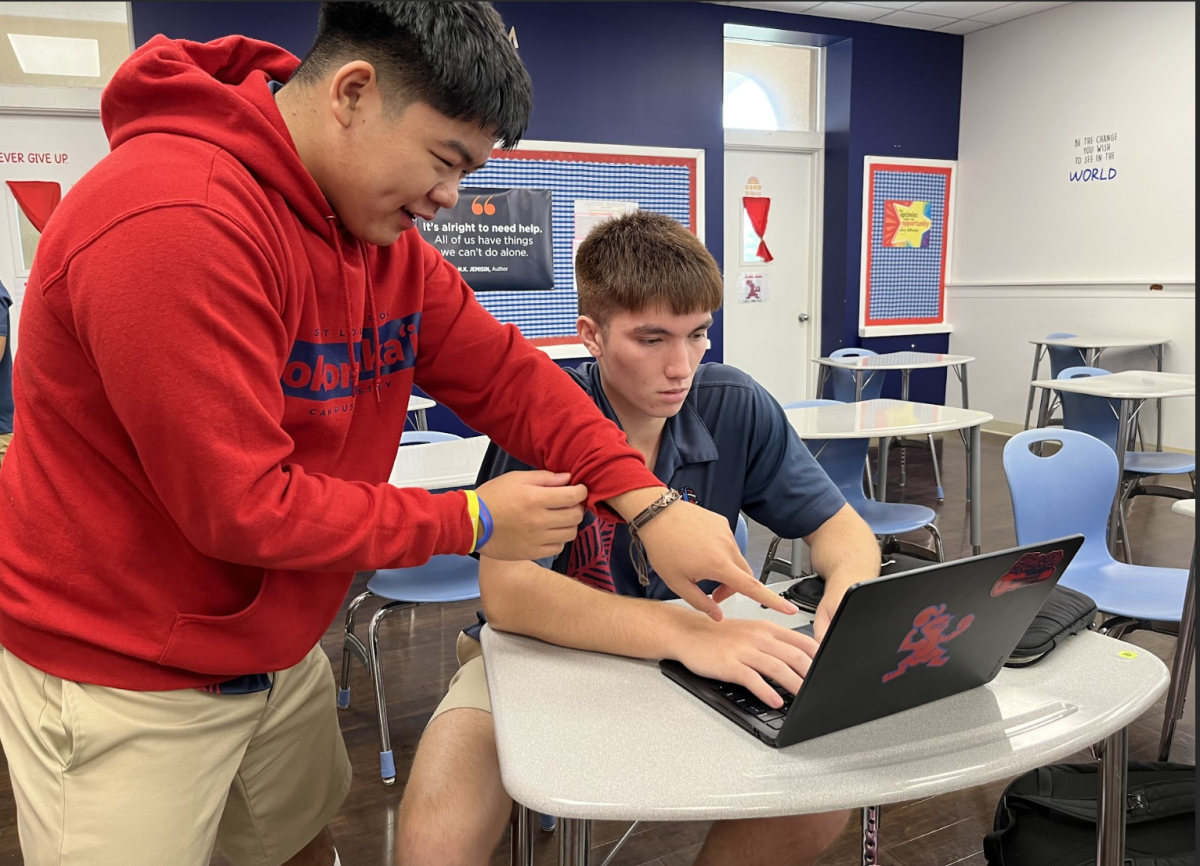In early November, Spanish language classes at Saint Louis celebrated Día de los Muertos, also known as “Day of the Dead.”
Día de los Muertos spans over two days when dead relatives and ancestors return to visit their living relatives. Families and friends make ofrendas, where living relatives fill an altar with pictures, snacks, drinks, and other offerings their ancestors may have wanted when they traveled back to the land of the living to honor them.
Some misconceptions about Día de los Muertos have deterred people from celebrating the holiday. “I think sometimes it’s misunderstood because people see all the skeletons, and it looks scary,” states Spanish language teacher Loraine Perez. “It’s not that we worship death, we just [do it to] remember our loved ones.”
 The Day of the Dead celebration has opened up Perez’s students to learn more about the holiday. “I kind of wanted to learn about what necessarily goes on the ofrenda,” says Spanish student Caeden McIntyre. “Before, I didn’t know what it was and what you put on it.”
The Day of the Dead celebration has opened up Perez’s students to learn more about the holiday. “I kind of wanted to learn about what necessarily goes on the ofrenda,” says Spanish student Caeden McIntyre. “Before, I didn’t know what it was and what you put on it.”
Students who have celebrated Día de los Muertos in the past were able to celebrate it with their classmates. “It was exciting celebrating Dios de los Muertos with my classmates,” says Spanish student Cash Acorda. “They learned about my culture and my traditions.”
Students who weren’t familiar with the celebration of Día de los Muertos were able to understand more about it as it is not a well-known holiday around Saint Louis. “It’s not necessarily practiced, at least from what I’ve seen from Japanese culture, Hawaiian, [or] Filipino,” says McIntyre. “It’s unique, especially with [the] food.
In Perez’s Spanish 3 class, students made their alebrijes. An alebrije is the spirit animal that guides a person through their life, as well as the afterlife. Many of them figured out what their alebrije was, while others learned more about their current one. “[It] helped me realize that owls specifically guide their person throughout the afterlife and onto [the] Earth,” Acorda states. “Each person in the afterlife has an animal that guides and protects them from bad spirits.”
Día de los Muertos is a day when you can fully connect with your ancestors on a deeper and emotional level compared to any other day. “I still have a hard time dealing with their death,” says Perez. “It’s just feeling like they’re there with me on that day, even though I know they are with me all the time, it just allows me to be happy.”
Every item that was put on the ofrenda symbolizes something special. The cempasúchil, or marigold, is the main flower of Día de los Muertos. Its sweet scent guides the ancestors back to their living relatives. The papel picado, or traditional paper banners represent the wind that unites the living and the dead. When it moves, it means that the ancestor is present. Salt on the ofrenda is believed to purify the soul, as water is to “quench the thirst of those traveling back to visit us,” says Perez. “Candles are supposed to light their way.”
The celebration of Dia de los Muertos allowed students to connect on a deeper level of culture. “I feel like everyone around here has deceased relatives… and it is a way of remembering them,” states McIntyre.
The activities in the classroom enabled students to learn how a person of a different culture might live. “Learning about any culture in general gives me a clear view of how others live,” says Acorda. “It has taught me to embrace the differences we all share.”
Día de los Muertos isn’t a time to be sad, but to understand the good things that happened when the person you are mourning was alive. “This day allows you to be happy and celebrate them, and eat all the stuff they like, and just be happy that they were actually in your life,” says Perez. “It’s okay to be sad, but it’s also okay to celebrate them.”









